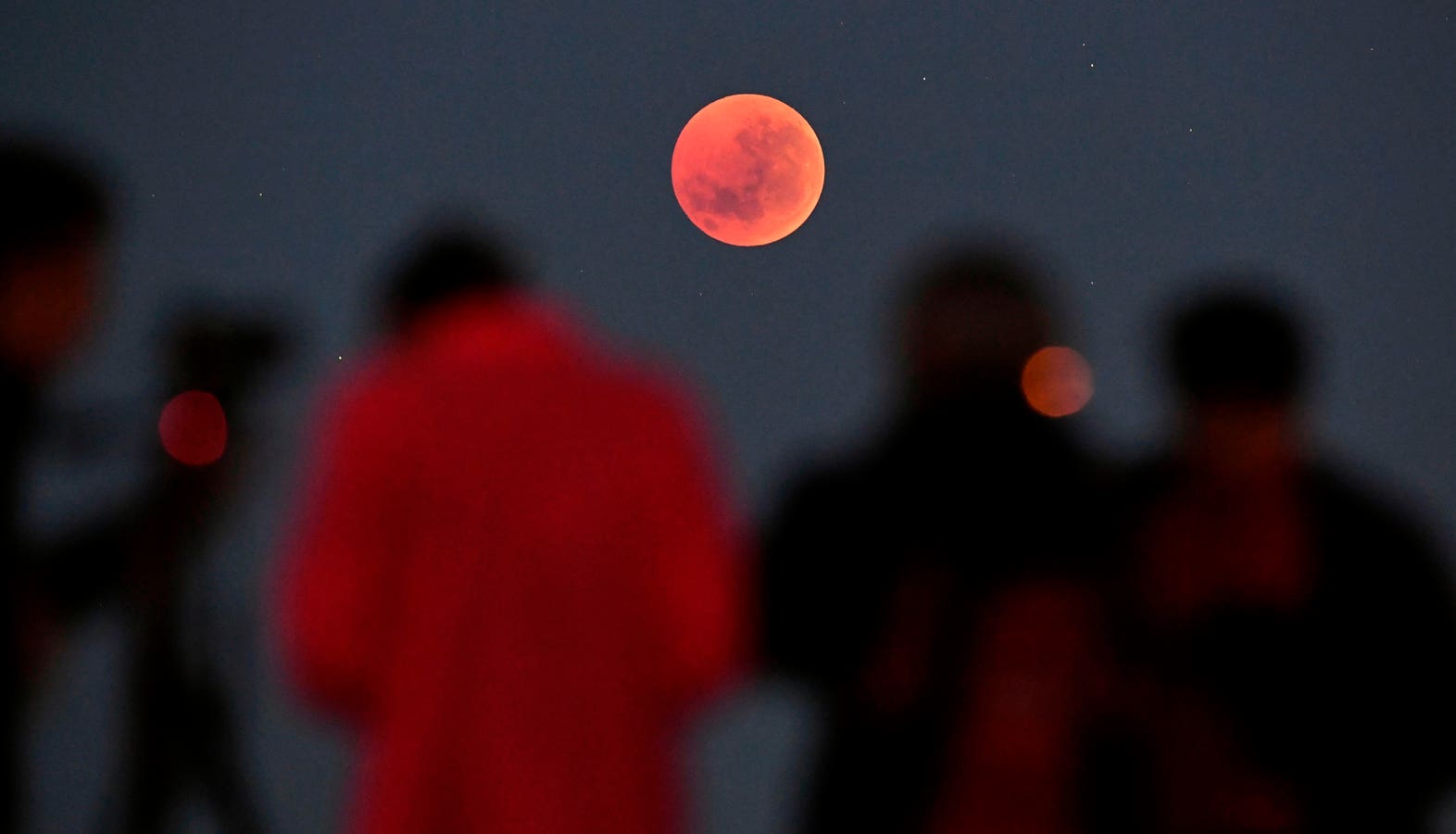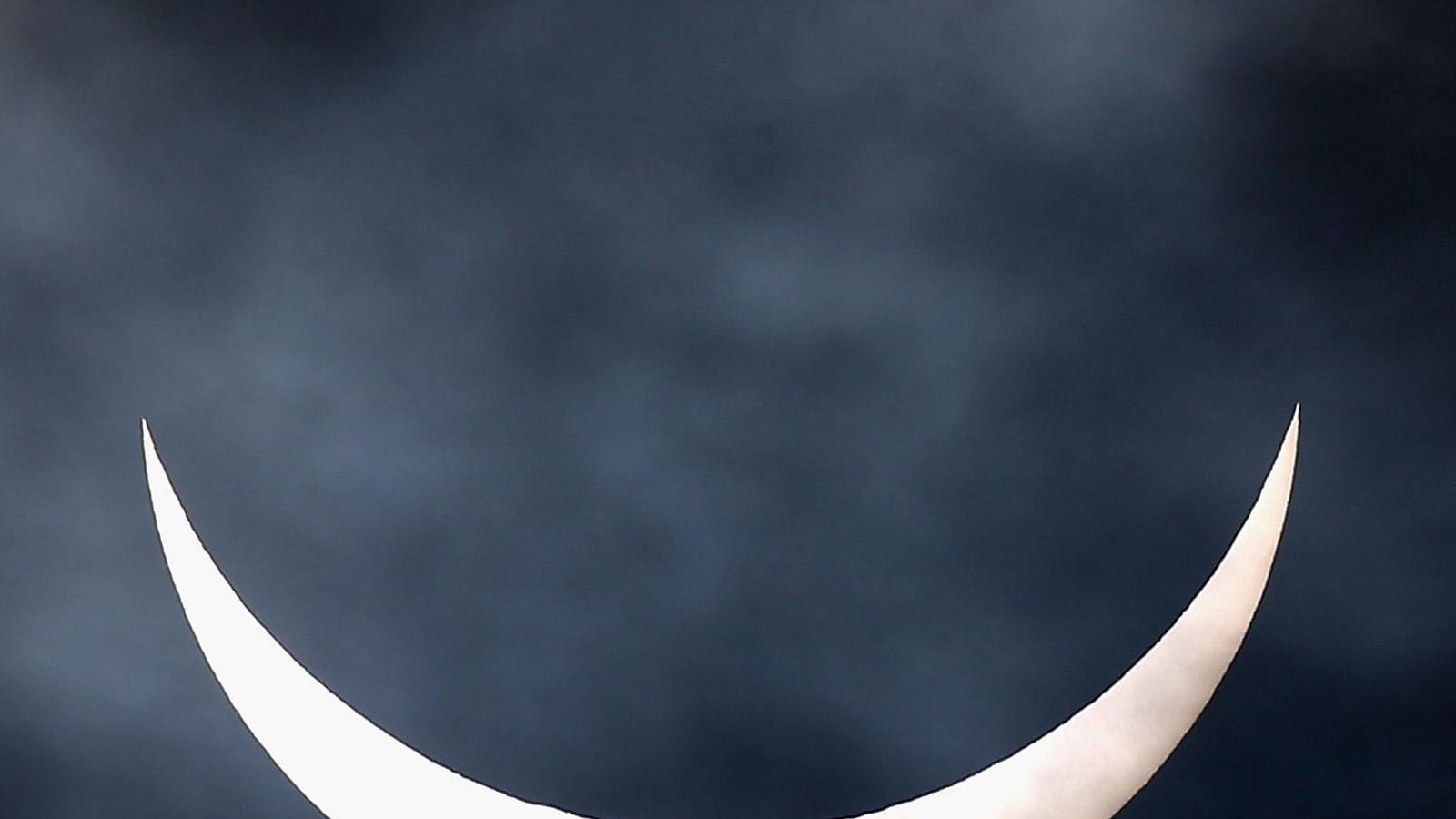People gather to watch a “blood moon” eclipse in Melbourne on July 28, 2018. (Photo by WILLIAM WEST / AFP) (Photo credit should read WILLIAM WEST/AFP via Getty Images)
AFP via Getty Images
September 2025 will see two spectacular eclipses, with the moon turning red for 82 minutes during a total lunar eclipse before up to 85% of the sun is blocked by the moon during a deep partial solar eclipse. However, the two events will have spectacularly different audiences — and neither will include North America.
These twin events are linked by the geometry of the Earth, moon and sun, as our natural satellite in space crosses the same orbital plane twice each month. When those crossings coincide with full or new moons, the result is a month-long eclipse season — and September’s edition will not disappoint.
A map of visibility of the total lunar eclipse on Sept. 7-8, 2025.
U.S. Naval Observatory
Total Lunar Eclipse 2025
The action begins on the night of Sept. 7-8, 2025, when the full corn moon drifts into Earth’s shadow in a spectacle that can be seen perfectly safely with the naked eye.
For skywatchers in Asia, Australia and the Pacific (and to some extent Eastern Europe), the moon will look a coppery “blood moon” for 82 minutes of totality, the central act of a spectacle that will last about five hours. Western Europe and Africa will catch the eclipse at moonrise, while the Americas are left out entirely, on the daytime side of Earth. It’s a reversal of March 13-14, 2025, when North America was perfectly placed for a memorable total lunar eclipse.
Although the U.S. and Canada won’t see the September blood moon, the full corn moon itself will still rise in dramatic fashion. Appearing on the horizon at dusk on Sept. 7, just hours after the eclipse, it will look a muted orange color before climbing higher and whitening in the sky. Traditionally named for the harvest season, but also known as the barley moon, the corn moon will be the last full moon of summer in the Northern Hemisphere.
The U.S. Naval Observatory’s map for the partial solar eclipse on Sept. 21/22, 2025.
U.S. Naval Observatory
Partial Solar Eclipse 2025
Two weeks later, on Sept. 21-22, 2025, a new moon will slip between Earth and the sun to create a partial solar eclipse. This time , the show belongs only to the Southern Hemisphere. At sunrise in New Zealand, up to 73% of the sun’s disk will be obscured by the moon, producing a striking crescent-shaped dawn. Farther south, in Antarctica, the eclipse will be deeper, covering nearly 80% of the sun. Maximum eclipse, at 85%, will occur over the ocean. Pacific islands such as Fiji and Tonga will also see a large bite taken out of the sun as day begins. Everyone watching any part of this solar eclipse will need to wear solar eclipse glasses and use solar filters on cameras, binoculars and telescopes at all times.
Eclipses always come in pairs because of the way the moon’s tilted orbit intersects the ecliptic, the path of the sun across Earth’s sky. If a full moon lines up precisely, a lunar eclipse occurs. That causes a new moon to also align for a solar eclipse. However, while September’s total lunar eclipse will be visible from regions home to 6.2 billion people (77% of the global population), its solar eclipse will play out to a mere 16.6 million, according to Timeanddate.com.
When Is The Next Eclipse?
This pair of eclipses is the last of 2025. However, there’s plenty more to come in 2026, with four different eclipses to look forward to spread across two eclipse seasons:
- Feb. 17, 2026: annular solar eclipse (Antarctica).
- March 3-4, 2026: total lunar eclipse (visible from Asia, Australia and North America).
- Aug. 12, 2026: total solar eclipse (Greenland, Iceland and Spain)
- Aug. 28, 2026: partial lunar eclipse (North America, South America, Europe and Africa).
Wishing you clear skies and wide eyes.









